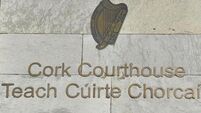'Big tooth' found in Hurricane Ike debris
A palaeontologist whose Texas beachfront home was destroyed during Hurricane Ike has found a football-size tooth in the debris.
Dorothy Sisk and Jim Westgate, scientists at Lamar University, discovered the fossil tooth in the front garden of Ms Sisk’s home in Caplen on the devastated Bolivar Peninsula.
Mr Westgate believes the fossil is from a Columbian mammoth common in North America until around 10,000 years ago.
The tooth looks like a series of boot soles or slices of bread wedged together. It is expected to be sent to the Texas Memorial Museum in Austin.
More than a million people fled the Texas coast because of Hurricane Ike.
The devastating effect of Hurricane Ike means Padre Island, the world’s longest undeveloped barrier island, now looks as if people have been living - and fly-tipping – for decades.
Tons of debris swept up by the hurricane last month were carried by Gulf of Mexico currents hundreds of miles from the upper Texas coast to the ordinarily pristine Texas landscape just north of the Mexican border.
Sections of roofs, refrigerators, love seats, beds, TVs, hot tubs and holiday decorations litter the 60-plus miles of gently arcing sand in the national park.
Some of the junk is good for a laugh, like the lifejacket-clad snowman someone placed next to a plastic pumpkin, a small but real palm tree and an acoustic guitar. But it is no joke to wildlife workers who are worried the rubbish will harm birds and other animals, including an endangered turtle that nests there in the spring.
“It could have a huge impact,” said Larry Turk, maintenance chief for Padre Island.
The park wants to clean up as much of the debris as possible before the Kemp’s Ridley turtles return, he said, because a debris-clogged beach would make it hard for them to dig their nests.
Some of the Padre Island debris is the stuff of anyone’s weekly rubbish, including the dustbin itself. Some smacks of irony: a sandbox in the shape of a green turtle, or an octopus preserved in a jar.
“It’s on all our beaches – everything, people’s lives,” said Tony Amos, a research fellow at the University of Texas’s Marine Science Institute.
No bodies have been found amid the rubble, although dozens of people remain unaccounted for.















